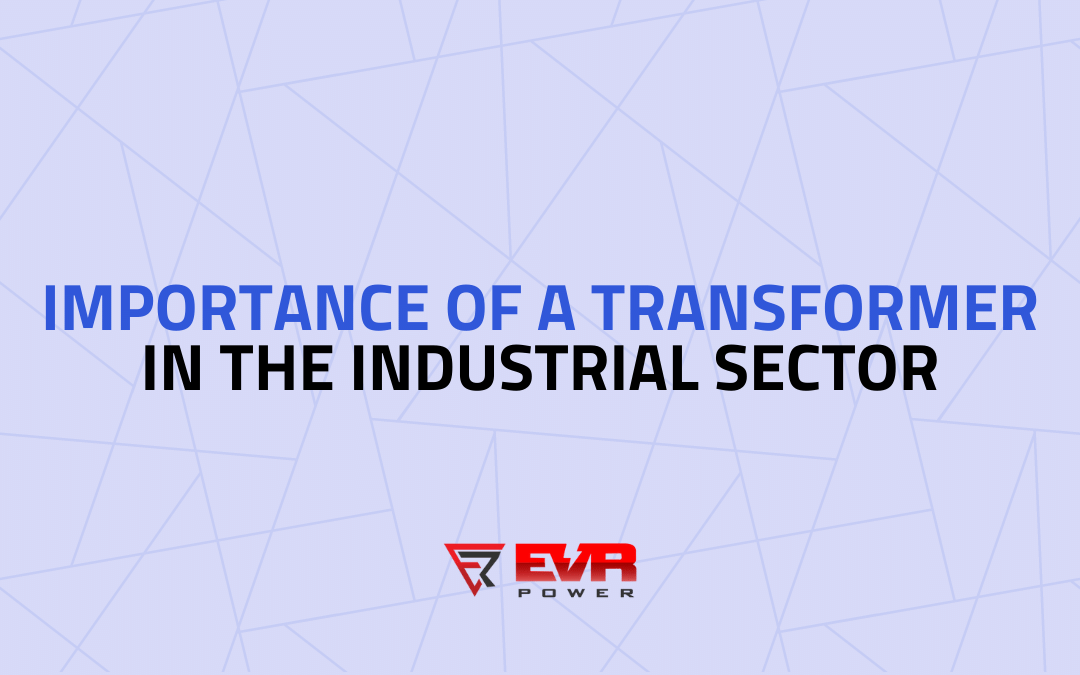Transformers ensure that the power supply is used appropriately, safely, and carefully in order to avoid power outages in the Industrial sector. That is why the importance of transformers in the industrial sector is well-known. The primary function of a transformer is to increase or decrease existing voltage to the suitable voltage level for use in an electrical circuit.
As we all know, massive machinery and equipment are a part of the industrial sector. Transformers that give them a significant amount of voltage are unquestionably important in a variety of sectors. Diverse appliances utilizing transformers may be found everywhere from substations and power plants to aerospace, biochemical, manufacturing, and telecommunication industries.
Furthermore, with the booming revolution in manufacturing industries, in 2020, the yearly installation of power transformers surpassed 6,000 units, and the market is expected to grow at a rate of over 5% between 2021 and 2027.
To know the importance of Transformers in the Industrial sector, first, we have to identify and have to understand some important aspects of the transformer. Accordingly, to make the subject easy to understand, we will discuss below mentioned topics further in this blog.
1. What is Transformer?
It’s a type of electric device that uses electromagnetic induction to transfer electrical energy from one circuit to another. Its most typically used to boost or lower voltage levels between circuits.
The primary windings, secondary windings, and magnetic core are the three basic components of a transformer. The turns connecting to the major source of electricity are referred to as primary windings. Magnetic flux passes through the magnetic core and connects with the secondary winding, causing an induced emf. The voltage generated by the secondary windings is used to power other circuits.
2.What is the need to use Transformer?
Electricity has become an integral element of our daily lives, and life without it is unimaginable. Industries surely require a consistent supply of energy, and they undoubtedly require a transformer to mitigate voltage instabilities, as some machinery is prone to failure owing to voltage issues.
A transformer is a solution to all of these problems, and it has the ability to correct them. Industries that use specialist machinery do not need to worry about transformers because high voltage transformers are created specifically for such uses. In most sectors, significant current applications are used, and workers are exposed to potentially deadly shocks, but this has been mitigated by the use of a specialized current transformer.
Because it measures electric current, the custom current transformer delivers a lower current even if the circuit is too high. As a result, modern industries do not need to be concerned about any problems that may arise as a result of power outages, and their output may thrive provided they have appropriate transformers.
3.What is the Importance of Transformers in the Industrial Sector?
A transformer’s job is to step up or down the alternating voltage while keeping the power level constant and the frequency constant. The number of turns in the primary and secondary windings determines whether the voltage levels rise or fall. The importance of transformers is customized in the following industries:
Automobile Industries
Customized smart transformers are now being developed to charge the batteries of numerous electric vehicles at the same time. They can monitor voltage levels and save money at the same time.
Industry of Electrochemistry
Electroplating is a typical procedure in the electrochemical industry. Different elements, such as copper, zinc, aluminum, chlorine, and others, are electrolyzed – rectifier transformers play a significant role in these processes.
Industry of Steel Production
To ensure a safe high voltage supply, specifically designed transformers are used. They’re designed to withstand the dielectric, mechanical, and thermal stresses of a steel furnace.
They’re also employed in a variety of industries, including aerospace, military, biochemical and biomedical, data processing, communications, and manufacturing.
We learned how different types of transformers may be used in a variety of situations. However, in a power transmission and distribution system, the transformer is critical. In terms of electrical grid transformers, they are a true lifeline during a hurricane.
They consistently perform reliably around the world in a safe manner, mostly unnoticed by the general population. Transformers, in simple terms, are designed to change the alternating current voltage that flows from one electric circuit to another by electromagnetic induction.
These devices have two or more windings twisted around an iron core that reduce or raise the voltage of electrical tools, depending on the situation. The number of windings in a transformer is determined by the amount of electric voltage it must deliver.
Transformers feature two types of coils: primary and secondary coils, both of which are connected to magnetic fields that operate as conductors. Step-up transformers are used to raise voltage levels, while step-down transformers are used to lower them.
Transformers do not have any moving parts, thus they do not require as much maintenance as other forms of equipment. Power transformers, on the other hand, must be maintained on a regular basis because their life and functionality are dependent on them.
Unfortunately, due to the transformer’s dependability, regular maintenance and upkeep are occasionally overlooked. As a result, the transformer’s lifetime decreases, eventually leading to failure and downtime.
With all of this in mind, it’s critical to accurately understand and analyse data acquired from monitoring transformers. The maintenance data gathered should be properly examined in order to improve the transformer’s functionality and reliability. Furthermore, maintenance plans provide essential information on existing difficulties that may necessitate the transformer’s replacement or repair.
What are the most common transformer applications?
- To obtain the desired voltage level, a transformer is utilized. A step-up transformer is used to raise the voltage, whereas a step-down transformer is used to lower it.
- In an AC circuit, a transformer can change the value of a capacitor, inductor, or resistance. As a result, it serves as an impedance converter.
- The transformer is also used to electrically disconnect two circuits.
- The transformer is used to match impedances.
- Transformers are employed to make electrical measuring devices like voltmeters, ammeters, and relays.
- It’s a correction tool. The process of converting A.C. to D.C. is known as rectification. High-voltage transmission necessitates the use of rectifiers. A mobile charger is the best example of a rectifier.
- It is utilized in voltage regulators and stabilizers, among other things.
- It is frequently employed in the process of power transmission and distribution.
Conclusion
As a result, it is necessary to monitor and manage the voltage regulation and power supply in an industry, a residential complex, or a commercial mall. Not only that, but transformers are widely used in the transmission and distribution of electricity.
The transformer is a critical component in cost-effective power transmission. Hence to get such high quality and top-notched transformer, one can approach EVR Power Limited, one of the best companies offering excellent models, sizes, and capacities of transformers.
EVR power assures to provide different types of transformers without compromising quality and helps to overcome the power-related challenges by providing an end-to-end transformer solution. Its customer support is 24*7, and the team is ready at your service even to provide repairing services to brands of any make. For the best customer service and world-class transformers, EVR Power is your go-to solution. To clarify your doubts, call them to get a free consultation.


0 Comments